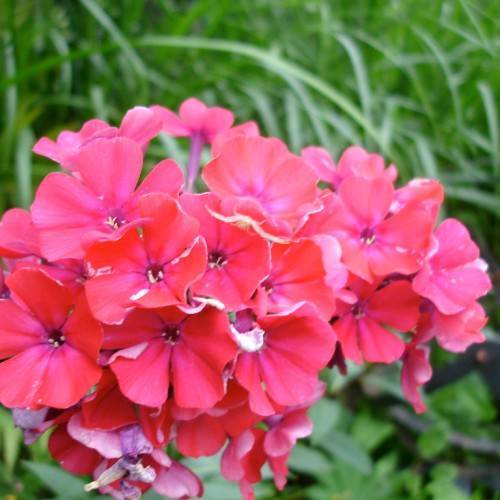
garden phlox
Phlox paniculata 'Starfire'
Also Known As - border phlox,common phlox,common phloxCycle:
Herbaceous Perennial
Watering:
Average
Hardiness Zone:
4 - 8
Flowers:
Flowers In Summer
Sun:
Full sun, Part sun/part shade
Soil:
Rocky , gravelly , dry, Well-drained
Fruits:
Fruits In Autumn Ready In
Leaf:
Yes
Growth Rate:
High
Maintenance:
Moderate
Care Level:
Medium
watering
Garden phlox (Phlox paniculata 'Starfire') should be watered deeply but infrequently. Aim for 1-2 inches of water per week during times of active growth. Allow the top few inches of soil to dry out in between waterings, and water less often during the winter months. Avoid overwatering, as this can lead to root rot. Avoid spraying the foliage with water as this can cause flowers and leaves to rot.
sunlight
Garden phlox (Phlox paniculata 'Starfire') prefers full sun or partial shade for optimal growth and flowering. Full sun is considered about 6 hours of direct sunlight each day. Partial shade is defined as 3-6 hours of direct sunlight per day. In very hot climates, partial shade may be needed to prevent the plant from drying out or becoming damaged from excessive heat.
pruning
Garden phlox (Phlox paniculata 'Starfire') should be pruned in early spring before new growth starts. As with most flowering plants, pruning should be done to encourage air circulation and to remove dead, damaged or diseased wood. Before pruning, inspect the plant for signs of disease or insect problems. Pruning garden phlox should be done with sharp secateurs or pruning shears on larger specimens. Prune lightly, removing about 1-third to 1-half of the stems back to a pair of strong buds. This will encourage larger, longer lasting flower heads. Remove any spent flowers and cut away dead or weak stems at their base. Any stems that are longer than the desired shape and size should be cut back to a pair of strong shoots. After pruning, ensure that all pruned material is collected and burned or placed in the municipal waste collection.
